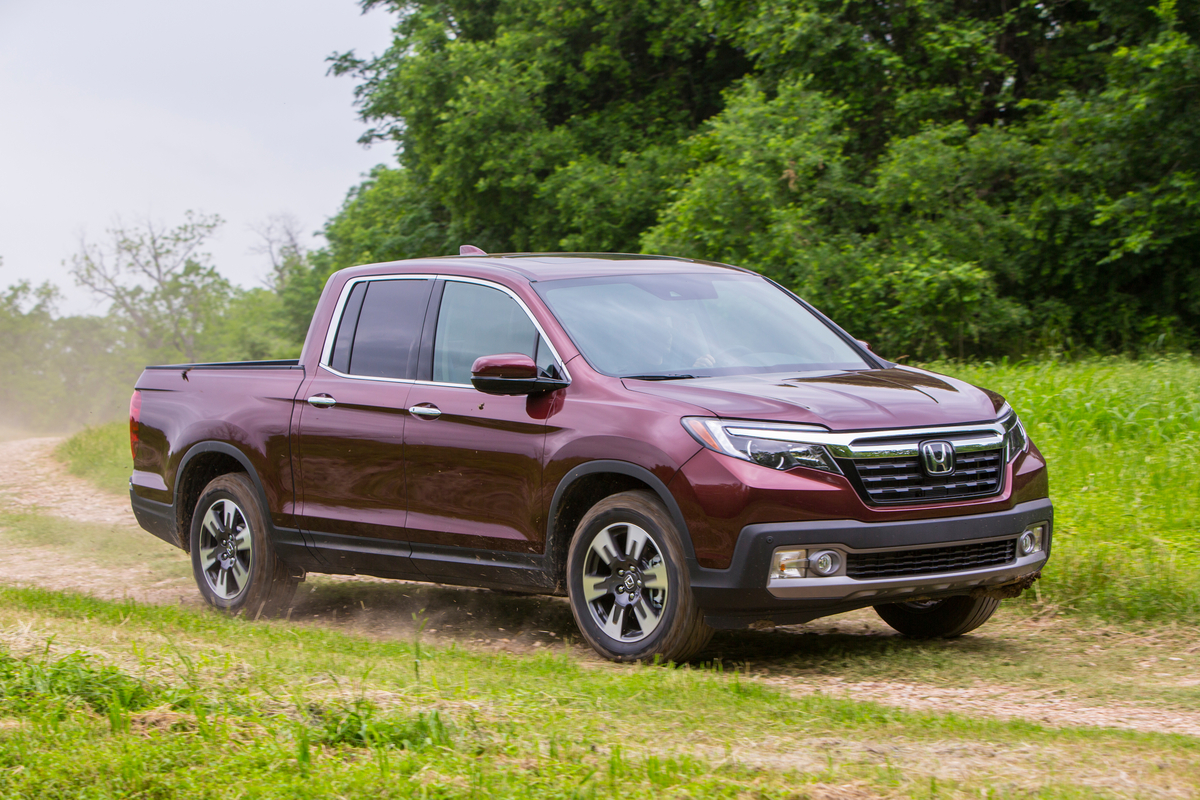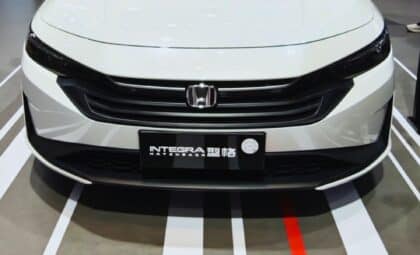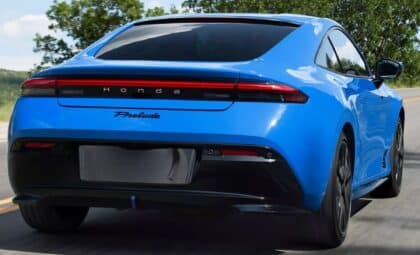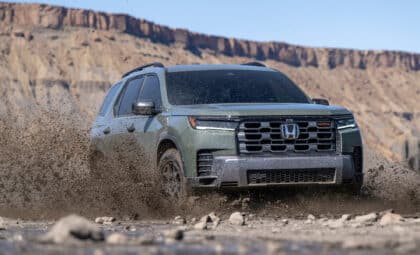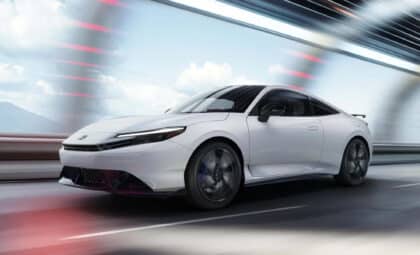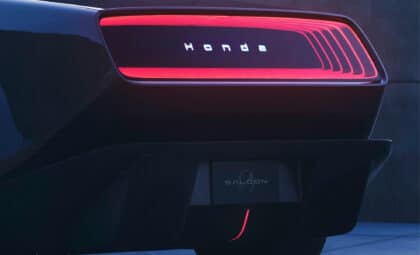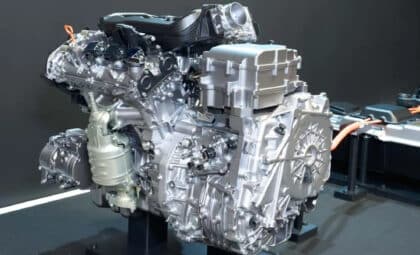Dave’s Ridgeline is this brilliant red color.
The all-new 2017 Honda Ridgeline scooped up one of the auto world’s most prestigious awards at the Detroit Auto Show this year, driving home with the North American Truck of the Year trophy. That’s all well and good, but how does it actually hold up against the competition? Dave is a friend of The News Wheel and has been driving trucks for more than 30 years. This past December he purchased the Honda Ridgeline after his Chevrolet Avalanche started to fall apart. I checked in with Dave to see what he thinks of this all-new truck and if it lives up to the hype.
Are You Ready? Check out how to make sure your car can handle fall weather
The News Wheel: So you have driven a Toyota truck, followed by two Chevy trucks, and now you’re driving a Honda.
Dave: Well, I have driven a pickup truck since 1983, which was a Toyota pickup truck and then a Chevy Silverado, then an Avalanche. And this time [in December 2016] when we went out, I test drove everything out there. We’ve always been a GM family for the most part, so I drove the [GMC] Canyon and the [Chevrolet] Colorado and did not like how they rode, the fit of the body panels, or the backseat room for my son to ride with us. I also test drove a [Toyota] Tacoma but could not find a Nissan locally to drive. I even test drove a full-size Silverado and Ford F-150 and I made sure to look around at a lot of different vehicles. The Chevy Avalanche I had owned for 14 (going on 15) years, so I was trying to find something with the same capabilities, flexibility, and utility that I need a vehicle for.
Now that you’ve been driving it for a while, how would you say it stacks up in terms of your old Avalanche?
In terms of comfort, it rides about the same as the Honda Pilot that it’s kind of based on. It is not a typical pickup truck in that it does not have a frame and ladder chassis. It has a unibody that handles extremely well. We’ve taken trips down to Tennessee and over into Pennsylvania [from Ohio]. It’s very comfortable to drive, very comfortable to ride in. Open freeway mileage in Economy mode was averaging about 27 to 29 mpg depending on condition. This model is the RTL trim so it has all the nanny cam features like adaptive cruise control, collision mitigation, and lane departure warnings built into it which on the freeway is good. I miss the Avalanche because I was so adapted to some of the features in it. The Avalanche had side saddle compartments that I could keep tools, straps, and jumper cables in. The Ridgeline has the trunk in the bottom of the bed that locks, so that is providing me the same functionality. The bed isn’t as deep, and I have a cover on top that also takes some space. This means I can’t slide the big Rubbermaid boxes I used for moving my kids into college under the cover like I could in the Avalanche. I rank it equal to, if not better than, the Avalanche. It’s smaller, so it fits in the garage.
Looking for More Passenger Room? Learn more about the 2018 Honda Odyssey
This is the first time I’ve bought a brand-new vehicle that I haven’t had to take back to the dealer for little fixes. There were no scratches or dings on the exterior, and no mechanical issues. I do have a weather seal that catches a bit, but that’s been it. Things I’d like to see different? I’d like to see turn signals in the rearview mirrors like the Canadian versions do, and a locking tailgate. I’d also like to be able to fold my mirrors in electronically from the inside. The information and entertainment centers can be a bit slow to start up, and keeping it in accessory mode after you turn it off is a bit of a struggle. That’s pretty much it. It’s been a good vehicle.
Would you say that the Ridgeline would be a good truck for people who go camping a lot or pull a boat? Or should they stick with a “traditional” truck?
That has to be an individual decision. The tow capacity of this Ridgeline is 5,000 pounds. It is an all-wheel drive vehicle, but it leans towards front wheel drive, which is unusual for a pickup. If you go to a Silverado or one of the other trucks, they have a bit more in the towing capacity. It all depends on how you use the truck. For me, it’s my daily driver. It takes me to and from work. Then when I need a truck, it works. I volunteer for a local radio station to work on towers and do remote reporting from football games and festivals, so I have to carry a lot of gear and people at the same time. It’s great for that.
Everybody has to look at what they are expecting to tow. A small camper or a small lightweight boat, they’re fine. You’re never going to pull a fifth wheel camper or a 6,000 pound dual-axle trailer. For 90% of what the average person needs in a truck, this vehicle succeeds. I didn’t need a Silverado or a big truck to keep up with my lifestyle.
I hesitate to call myself a truck person, but I like driving one because of the versatility for more vehicle when I need it. I travel a lot and rent and drive a lot of cars. By doing that, I can take a look at what my home requirements are, like being able to be able to go to go to Home Depot and get a sheet of plywood. The one thing nice about the Ridgeline versus the other trucks I drove is that a 4×8 sheet of plywood fits between the wheel wells and sits totally flat. It’s not long enough for the whole sheet, so you have to strap it in, but none of the other trucks could do that. The trim level we got was because of the safety features, memory seats and heated seats. For the average person, if they are looking to be able to occasionally haul something, this seems to check all the boxes more than anything else does.
You brought up the safety features. I know there is an option to turn some of them off. Are there any you choose to drive without?
I turn road mitigation off in town. I have a tendency of driving more to the left in the left lane and more to the right in the right lane, and it does not really like that. The adaptive cruise control I leave on and use, but I will be driving above or near speed limit and then realize I’ve dropped five miles per hour below because of a vehicle in front of me. Without it, I would be paying more attention and be slowing myself down or getting in a different lane. I have played around with turning off the adaptive cruise control, but I’ve actually decided to turn it back on. I love the blind spot indicators, because they tell me when someone is hovering on my side. It’ll scream at you if you do try to merge into an occupied lane, which is good. The safety features are great, especially for longer road trips.
Have you ever had the forward collision warning go off on you?
I’ve had it go off a couple of times. Once, someone dove in front of me, almost taking the nose off the truck. It nosed down [braked hard] and helped me avoid hitting the other car. It has gone off if I’ve been following a bit close or traffic slows down. I really appreciate it, and it hasn’t been overbearing. It can be a bit touchy, but to me it’s a wake up call that I’m in traffic and I need to be paying more attention.
Any final thoughts?
For the most part, I think Honda did a good job. They certainly don’t promote the truck near enough, but maybe it’s because they’re making all they can in Alabama and can’t sell more. If they want to be serious about being in the truck world, and I think this truck is a serious contender, they should be marketing it more. It doesn’t have the ground clearance to be an off-road 4×4, but it is for your average Joe living in the suburbs that wants a daily driver with reasonable gas mileage but the room to conquer bigger projects.
A Dayton native, Rebecca got her start blogging at the curiously named Harlac’s Tongue while studying abroad in the UK. She loves tooling around town with her Ford Focus named Jerome to the song they’re playing on the radio. On any given weekend, you can find her with her camera at area festivals, concerts, and car shows, shopping at flea markets, or taking an adventure on the open road. See more articles by Rebecca.

